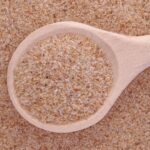Exercise is a cornerstone of a healthy lifestyle, providing countless benefits for physical, mental, and emotional well-being. Whether you’re a beginner or an experienced fitness enthusiast, understanding the fundamentals of exercise and its benefits is crucial. This comprehensive guide delves into the importance of exercise, types of workouts, and tips to maintain a consistent fitness routine.
Table of Contents
Why Exercise is Essential: Exercise
Exercise is not just about losing weight or building muscle—it’s about improving overall health and enhancing the quality of life.
Physical Benefits of Exercise
- Improved Cardiovascular Health: Regular physical activity strengthens the heart and reduces the risk of heart disease.
- Better Bone and Joint Health: Weight-bearing exercises increase bone density and help prevent osteoporosis.
- Enhanced Strength and Endurance: Resistance training improves muscle mass and overall strength, making everyday tasks easier.
Mental and Emotional Benefits
- Stress Reduction: Exercise triggers the release of endorphins, which combat stress and boost mood.
- Improved Cognitive Function: Regular workouts enhance memory, focus, and creativity.
- Better Sleep: Physical activity helps regulate sleep patterns, ensuring a more restful night.
Types of Exercise
Cardiovascular Workouts
Cardio exercises elevate your heart rate and improve cardiovascular endurance. Examples include:
- Running or jogging
- Cycling
- Swimming
- Aerobics
Strength Training
Strength training focuses on building muscle mass and improving strength. Common forms include:
- Weightlifting
- Resistance bands
- Bodyweight exercises (e.g., push-ups, squats)
Flexibility and Balance
Flexibility and balance exercises enhance mobility and reduce the risk of injury. These include:
- Yoga
- Pilates
- Stretching routines
High-Intensity Interval Training (HIIT)
HIIT combines short bursts of intense exercise with recovery periods, making it an efficient way to burn calories and improve fitness.
Recreational Activities
Sports and outdoor activities such as tennis, hiking, or dancing make exercise enjoyable and engaging.
How to Get Started with Exercise
Assess Your Fitness Level
Begin by evaluating your current fitness level. This can involve simple tests like:
- Measuring how far you can walk or run without feeling fatigued.
- Tracking the number of push-ups or squats you can perform.
Set Realistic Goals
Define clear, achievable fitness goals. For example:
- Losing a certain amount of weight in three months.
- Running a 5K within six weeks.
- Building strength to lift a specific weight.
Create a Balanced Routine
Incorporate different types of exercises to ensure all aspects of fitness are addressed. A balanced weekly plan might include:
- 3 Days of Cardio: Running, cycling, or swimming.
- 2 Days of Strength Training: Focus on upper and lower body.
- 1 Day of Flexibility Training: Yoga or stretching.
- 1 Rest Day: Allow your body to recover.
Tips for Staying Consistent
Find an Exercise You Enjoy
Enjoyment is key to maintaining a fitness routine. Experiment with different activities to discover what you love.
Schedule Your Workouts
Treat your exercise sessions as appointments that cannot be missed. Consistency is easier when workouts are part of your routine.
Track Your Progress
Monitor your achievements to stay motivated. Use fitness apps, journals, or wearable trackers to record your workouts and results.
Stay Flexible
Life can be unpredictable, so adapt your workout schedule when needed. Even a 10-minute session is better than skipping a day entirely.
Common Challenges and How to Overcome Them
Lack of Time
- Opt for shorter, high-intensity workouts.
- Integrate exercise into your daily routine, like walking during lunch breaks or taking stairs instead of elevators.
Plateaus
- Change your workout routine to challenge your body.
- Increase intensity, try new exercises, or add more weight during strength training.
Injuries
- Always warm up before exercising and cool down afterward.
- Listen to your body and consult a professional if pain persists.
Importance of Nutrition in Exercise
Fueling Your Workouts
Proper nutrition supports your fitness goals by providing the energy and nutrients needed for optimal performance.
- Pre-Workout Snacks: Include a mix of carbohydrates and proteins, like a banana with peanut butter.
- Post-Workout Meals: Focus on protein-rich foods to aid muscle recovery, such as grilled chicken or protein shakes.
Staying Hydrated
Dehydration can negatively impact your performance and recovery. Drink water throughout the day and during workouts.
Popular Exercise Trends in 2024
Virtual Fitness Classes
Online workouts have become increasingly popular, offering flexibility and variety. Platforms like Peloton and YouTube host diverse sessions.
Functional Training
Exercises that mimic daily movements, such as squats and lunges, are gaining traction for their practical benefits.
Wearable Technology
Fitness trackers and smartwatches help monitor heart rate, steps, calories burned, and more, enhancing motivation.
Benefits of a Personal Trainer
Hiring a personal trainer can accelerate your progress by providing personalized guidance and accountability. Trainers can:
- Tailor workouts to your fitness level and goals.
- Teach proper form to prevent injuries.
- Keep you motivated with regular check-ins.
The Role of Rest and Recovery
Why Recovery Matters
Rest days allow your muscles to repair and grow stronger. Overtraining can lead to fatigue, decreased performance, and injuries.
Techniques for Recovery
- Active Recovery: Light activities like walking or yoga.
- Massage and Foam Rolling: Reduce muscle soreness and improve circulation.
- Adequate Sleep: Aim for 7–9 hours per night to support recovery.
Exercise for Different Age Groups
Children
Encourage fun and engaging activities like playing tag, cycling, or swimming to build healthy habits early.
Adults
Focus on maintaining cardiovascular health, muscle strength, and flexibility. Incorporate moderate-intensity activities like brisk walking or strength training.
Seniors
Prioritize low-impact exercises to enhance balance, mobility, and strength. Options include tai chi, water aerobics, and chair yoga.
Conclusion
Exercise is a powerful tool for improving physical, mental, and emotional health. By understanding the various types of workouts and creating a balanced routine, you can enjoy a healthier, happier lifestyle. Stay consistent, adapt as needed, and remember that every small effort counts toward your fitness journey.
Start your exercise journey today and unlock the immense benefits it offers for your overall well-being!


